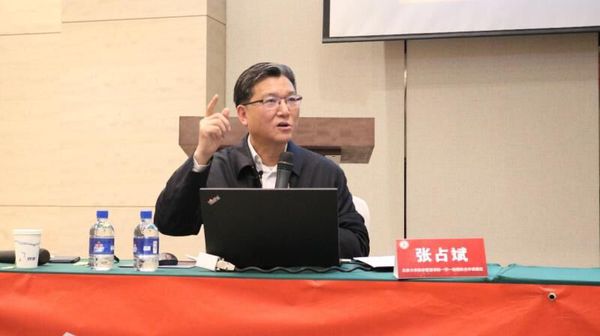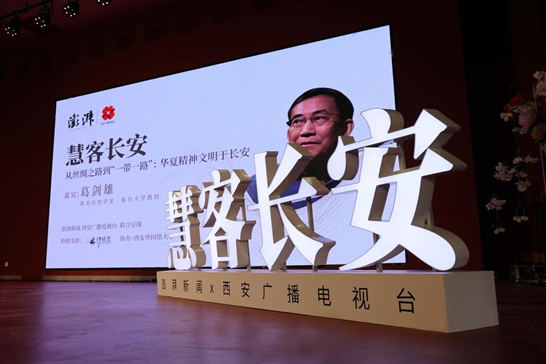Foreign Banks Increase Their Investment In China-ASEAN Strategy, From Serving Manufacturing To Helping New Consumption Go Overseas
Foreign Banks Increase Their Investment In China-ASEAN Strategy, From Serving Manufacturing To Helping New Consumption Go Overseas
In the past, ASEAN was mainly a transit place for manufacturing, but now it has evolved into a hot spot for competition and development in various industries.
In the past few years, with the increase in geopolitical uncertainty and the reconstruction of global supply chains, a large number of Chinese manufacturing and Internet companies have accelerated their pace of going overseas, shifting to ASEAN countries such as Vietnam, Thailand, Indonesia, and Malaysia and expanding their markets.
In May this year, the special meeting of China-ASEAN Economic and Trade Ministers was held online. The two sides jointly announced the full completion of the 3.0 negotiations on the China-ASEAN Free Trade Zone, taking a key step towards the goal of signing the upgrade protocol.
Against the backdrop of stricter global financial supervision and rising pressure on capital returns, European and American banks' business focus in the Asia-Pacific region has become more "prudent" and "cost control". In contrast, those foreign banks with strong local or regional nature in ASEAN can provide "localized, flexible and implementable" financial solutions in the process of Chinese-funded enterprises going overseas in Southeast Asia.
Recently, Sunil, co-global head of corporate and investment banking business of Standard Chartered Bank and CEO of ASEAN and South Asia, said in an interview with First Financial Daily that ASEAN is expected to become a new frontier of global growth. The total population of China and ASEAN exceeds 2 billion, and the total GDP of ASEAN has exceeded US$4 trillion. As the world's second largest economy (calculated as the world's largest economy based on purchasing power parity), this cooperation framework is a significant "win-win agreement" for both parties. He said that in addition to manufacturing and Internet companies, there are also more new consumer companies accelerating their expansion in the ASEAN market. Standard Chartered has established a deep business foundation in all 10 ASEAN countries and continues to increase local market investment.
Foreign banks continue to increase investment in ASEAN
Gao Shunian attended the 2025 Standard Chartered China Enterprise Summit and said in an interview with reporters that the 3.0 version of the Free Trade Zone will accelerate the development of China-ASEAN trade cooperation. China and ASEAN have become each other's largest trading partners, and the scale of trade between the two sides is still growing. Recently, the two sides have fully completed the negotiations on the 3.0 version of the Free Trade Zone, sending a very important signal.
The 3.0 version of the China-ASEAN Free Trade Zone includes important contents such as digital economy, green economy, and supply chain resilience. The implementation of version 3.0 will accelerate the development of China-ASEAN trade cooperation, promote cooperation between the two sides in the fields of digital economy, artificial intelligence, e-commerce, intelligent manufacturing, green economy, etc., and achieve mutual benefit and win-win results.
It is worth mentioning that the ASEAN region is currently a key destination for Chinese companies to go overseas, and it is also a region where foreign banks increase their strategic layout, especially ASEAN has already deployed larger banks, which are committed to exerting their capabilities in new business priorities such as digital banking and sustainable financial services. For example, Standard Chartered is an international bank with outlets in 10 ASEAN countries, and has operated for more than a hundred years in major markets (Singapore, Myanmar, Indonesia, etc.).
Lu Jing, President and Vice Chairman of Standard Chartered Bank (China), also mentioned to reporters that under the current tariff situation, China Plus One (China 1) strategy has been upgraded from 1.0 to 2.0. Early version 1.0: China Plus One strategy is more about outsourcing the "last one or two steps" of the production chain to third countries to enhance the resilience of the supply chain; current version 2.0: Enterprises are beginning to focus on establishing a complete industrial chain and value chain overseas (especially ASEAN), which is a global layout for enterprises' long-term strategic transformation.
This can also be seen from the growth rate of investment of Chinese companies. Gao Shunian introduced that China's foreign direct investment (ODI) in ASEAN increased by 12% in 2024. China has been one of the top three ODI sources in the world for 12 consecutive years; ASEAN is the main investment destination, and is constantly deepening in market research, local partnerships, and industrial chain localization.
ASEAN has multiple attracting factors, including: relative political stability; RCEP (Regional Comprehensive Economic Partnership Agreement) has been implemented; it has a population of 700 million and is highly rejuvenated; it is conducive to the transfer of production bases and has broad potential for consumer markets; it helps Chinese-funded enterprises to "dual-wheel drive" - serving local markets and global exports at the same time.
Going overseas from manufacturing to new consumption
It is worth mentioning that in the past, ASEAN was mainly a transit place for manufacturing, but now it has evolved into a hot spot for competitive development in various industries.
Gao Shunian told reporters that in addition to manufacturing, digital enterprises, services, finance (such as insurance companies), etc. are entering the Southeast Asian market. In the past, industrial investment was the main focus, but now it is more diverse. The reason is that as China and ASEAN trade ties strengthen, the cooperation field has expanded from the economy to culture and soft economy, forming a richer ecosystem.
According to the reporter, taking Standard Chartered as an example, the bank had previously cooperated with new energy companies, such as Huayou, Geely, Greenmei, etc. In the past two years, more new economy or new consumer companies have begun to rise and Southeast Asia is regarded as a key development market, such as Naixue’s Tea, Pop Mart, Mengniu, Yili, etc. They are also becoming the main service targets of foreign banks.
In fact, ASEAN has begun to rise as an independent consumer market, and there are multiple supporting factors behind this. Lu Jing said that the first is the demographic dividend. Under the RCEP framework, the young population in Southeast Asia has grown rapidly and has become an important consumer growth market; Chinese companies are optimistic about the rise of the middle class in Southeast Asia and believe that this will bring huge market opportunities; in addition, different ASEAN countries have different industrial policies and development agendas, with goals including economic growth, industrial chain improvement, infrastructure construction, independent supply chains, etc.; countries develop their own industrial foundation and industrial chain by taking over the "spillover opportunities" of China's supply chain.
Take specific companies as an example. This year, the "Snow King" Mixue Group rang the bell and went public on the Hong Kong stock market, becoming the new generation of "Hong Kong stock frozen capital king". From a global perspective, Mixue Group is the company with the largest number of stores and the largest freshly made tea company in the Southeast Asian market. The layout of Southeast Asia also helps Mixue improve the "second curve". Vietnam's penetration rate has reached a relatively high level, while other countries (such as Thailand, Malaysia and Indonesia) still have large gaps in market opportunities. Data shows that from the first quarter of 2023 to the first quarter of 2024, Vietnam added 900 new stores and Indonesia added 1,200 new stores; Bawang Tea Ji, also a tea brand, is considered to have the opportunity to become "Oriental Starbucks", and its positioning is more mid-to-high-end, targeting the population only accounts for 15% to 20% of the Southeast Asian population, while Mixue Bingcheng's positioning covers more than 70% of consumers.
In addition, trendy toy giant Pop Mart has also made great efforts to expand into the Southeast Asian market. According to the financial report, among the 130 stores, there are about 11 to 12 stores in Southeast Asia under the dealer model, located in Thailand, 3 in Vietnam, and 3 to 4 in Singapore. In the 2025 plan, the entire Southeast Asia region plans to reach a total of 90 stores, with a faster expansion pace.
RMB settlement volume rises
With the increase in Chinese companies going overseas and China-ASEAN interaction, the pace of RMB internationalization is also accelerating, which is also directly reflected in the cross-border RMB settlement volume.
Gao Shunian said that since 2012, Standard Chartered Bank has continued to track the internationalization process of RMB and used RGI to measure it. In 2023, the proportion of RMB in China's import and export settlement has exceeded 50%. Although affected by exchange rate fluctuations, the overall trend is upward.
Recently, he has also observed that more and more "Belt and Road" projects have turned to RMB financing, including lower financing costs and the projects are originally guaranteed by Chinese institutions, so it is more reasonable.
Lu Jing also believes that the current proportion of RMB in global trade settlement is only about 3.5% to 4%, which is still incompatible with China's position as the world's largest trading country and has room for further improvement. Especially in the context of the continued high interest rates of the US dollar, the RMB has become a low-cost financing currency, especially for Chinese-funded enterprises and countries with close trade relations with China. Standard Chartered is also actively participating in and promoting the global use of the RMB.
In her opinion, RMB settlement needs to be agreed upon from the contract signing stage, and many companies are still accustomed to signing contracts in US dollars or local currency. Therefore, RMB settlement promotion requires companies to make currency arrangements at the beginning of the contract signing.
"Although all countries want to use local currency to settle, whether it can be achieved depends on whether trade and investment are balanced enough and whether there is a complete monetary ecosystem." She said that comprehensive local currency settlement is difficult, and current local currency settlement is mainly applicable to countries with large bilateral trade volume.
In fact, the progress of RMB internationalization has also benefited from the construction of the ecosystem. For example, Lu Jing said that through the clearing system (CIPS) and interconnection projects, overseas investors can use RMB to invest in RMB-denominated assets more conveniently; in addition, the regional cooperation mechanism has also been strengthened, and the People's Bank of China and friendly countries such as ASEAN signed a "Bilateral Local Currency Clearing Agreement" to jointly explore the local currency settlement mechanism and build a stable regional financial cooperation model.





